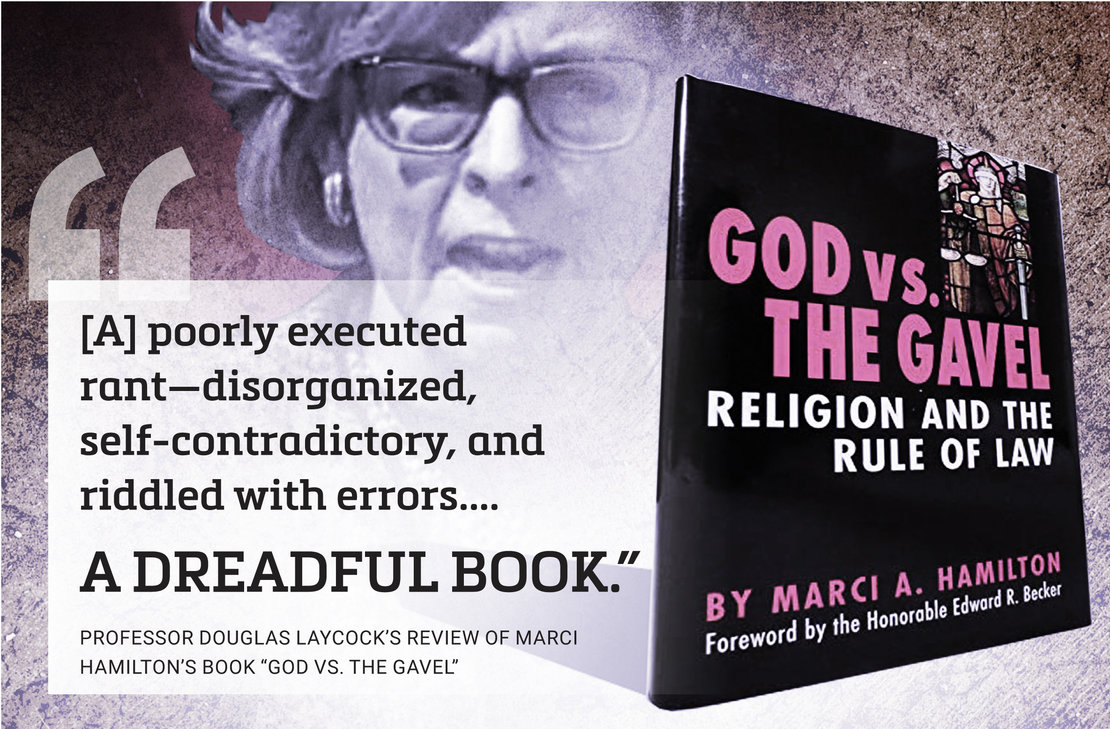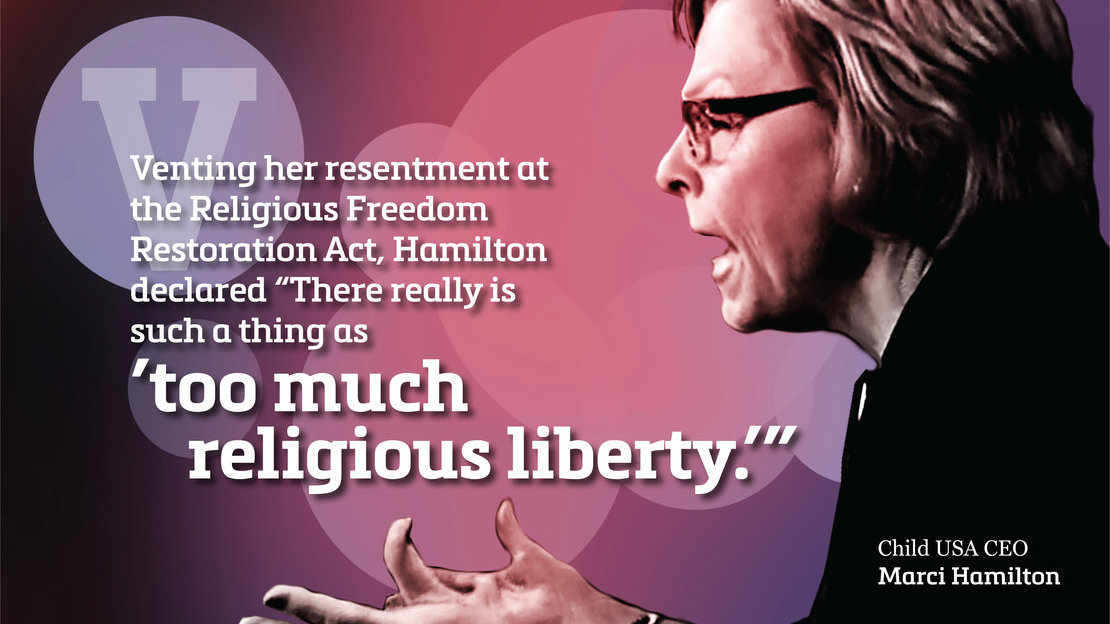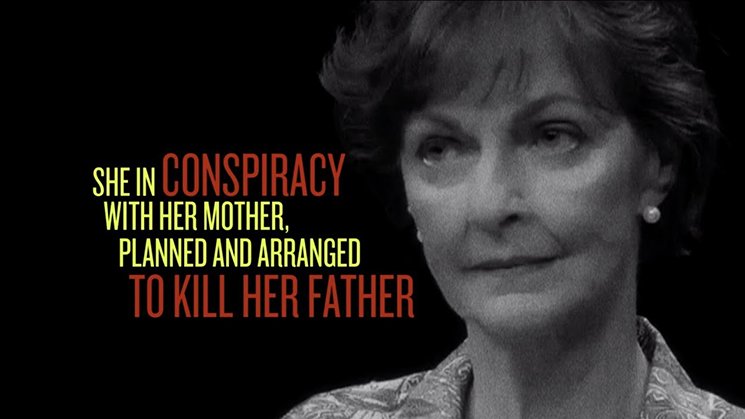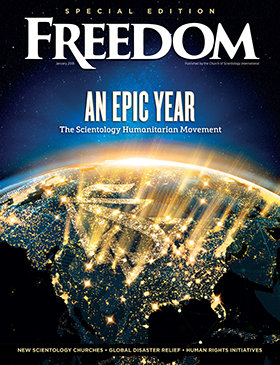A Syllabus of Errors
GOD VS. THE GAVEL: RELIGION AND THE RULE OF LAW
by Marci A. Hamilton
Book Review by Douglas Laycock
This is an excerpt from a review that originally appeared in the Michigan Law Review, authored by Professor Douglas Laycock, one of the nation’s foremost experts on religious liberty.
Modern American society is pervasively regulated. It is also religiously diverse to a degree that is probably unprecedented in the history of the world. It is inevitable that some of these diverse religious practices will violate some of these pervasive regulations, and equally inevitable that if we ask whether all these regulations are really necessary, sometimes the answer will be no.
If we take free exercise of religion seriously, sometimes it will make sense to exempt sincere religious practices from generally applicable laws— but only some laws, and only some applications. Hardly anyone thinks that human sacrifice should be exempted from the murder laws. And hardly anyone thinks that government should compel Catholics to ordain female priests, or forbid children to take a sip of communion wine. Other cases provoke more disagreement. Who should decide, and on what criteria?
[T]he book is a poorly executed rant—disorganized, self-contradictory, and riddled with errors.... Chapter Ten suggests that her position may not be as extreme as it often sounds, but this appearance of moderation is too little, too late, to save a dreadful book.
The legal claim in God vs. the Gavel is that only legislatures may decide, and that judges may not. The legislature must enact specific rules for religious exemptions; it may not enact religious exemptions under a generally applicable standard to be interpreted by judges. Professor Marci Hamilton briefly argues for this claim in Chapter Ten.
The rest of the book is a poorly executed rant—disorganized, self-contradictory, and riddled with errors. Chapters One through Nine make a much broader legal claim that is quietly abandoned in Chapter Ten. Chapter Ten suggests that her position may not be as extreme as it often sounds, but this appearance of moderation is too little, too late, to save a dreadful book.
Part One catalogs abuses and alleged abuses by religious organizations and individuals. Chapter One asserts that Americans hold an unrealistic belief that religion is always good. But in fact, Hamilton says, religion does much harm, and therefore must be regulated....
ERRORS AND FALSEHOODS
Hamilton’s tale of harms inflicted by churches is anecdotal, which is the way to reach an intended audience of voters and legislators. There is no dispute over the larger point: churches and religious believers have done things that should be regulated. But her specific claims are so error ridden that one cannot believe anything she says without confirming it. Some of these errors are simply sloppy, but many flow from her exaggerated rhetorical style. She characterizes every example in the worst possible terms, and she does not allow mere facts to get in the way of good rhetoric.…
Occasional errors are inevitable, but here the extraordinary number of errors, often with reference to famous cases and basic doctrines, implies a reckless disregard for truth.
I document these errors for a reason. No one should cite this book. No one should rely on it for any purpose.
Hamilton leads with graphic stories of sexual abuse of children and adolescents. One might suppose that here, if anywhere, she could work with the horrific facts she has, without exaggeration or misrepresentation. But one would be wrong.…
I could go on—and these are just the claims that were immediately suspicious on first reading. I have to infer that if I investigated each of her footnotes, I would find many more such errors.
Occasional errors are inevitable, but here the extraordinary number of errors, often with reference to famous cases and basic doctrines, implies a reckless disregard for truth. I document these errors for a reason. No one should cite this book. No one should rely on it for any purpose. You might use its footnotes as leads to other sources, but take nothing from this book without independent verification.
CONCLUSION
Legal scholars may be advocates, and they may reach out to non-scholarly audiences, but every scholar has a minimum obligation of factual accuracy and intellectual honesty. God vs. the Gavel does not come close to meeting either standard. Nor does it offer a sustained argument for its legal claim about the institutional competence of courts and legislatures. Its many footnotes offer the patina of scholarship, but there is no substance of scholarship. This book is unworthy of the Cambridge University Press and the Benjamin N. Cardozo School of Law.
Full article available at: https://repository.law.umich.edu/cgi/viewcontent.cgi?article=1459&context=mlr












